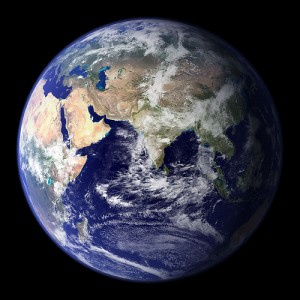For want of a half penny, a future was lost…
Yesterday, my son shared the video below - Neil deGrasse Tyson's "We Stopped Dreaming (Episode 1)". It took me back to childhood memories when I was inspired to be a scientist. I remember watching the Apollo launches. I think I remember listening to the Gemini 4 space walk – I was four, and my father recorded it on reel-to-reel, but I don’t remember him ever replaying it. I remember staying up late and falling asleep…thankfully to be awoken by my mother just before Apollo 11 landed on the moon. ...Skylab, ...the test flight of the Space Shuttle Enterprise. Years later, I left behind aspirations of a science career (practicalities…how much money does the average physicist make anyway?) for one of engineering, but the love of space, cosmology, NASA…all still with me…which is why what Neil deGrasse Tyson is saying in this video saddens me all the more.
I worry that decisions Congress makes doesn't [sic] factor in the consequences of those decisions on tomorrow.Apart from the applicability of that to just about any of the current Congress's decisions, he’s dead right in this specific instance. We are not funding science. We are not encouraging and developing engineers. We are failing in educating our young people, not only in the technical fields, but in general. The Organisation for Economic Co-operation and Development’s Programme for International Student Assessment (PISA) compares 15 year olds in 65 industrial countries. From the 2009 report:
The OECD Programme for International Student Assessment (PISA) is a collaborative effort among OECD member countries to measure how well 15-year-old students approaching the end of compulsory schooling are prepared to meet the challenges of today’s knowledge societies. The assessment is forward-looking: rather than focusing on the extent to which these students have mastered a specific school curriculum, it looks at their ability to use their knowledge and skills to meet real-life challenges. This orientation reflects a change in curricular goals and objectives, which are increasingly concerned with what students can do with what they learn at school.“…to meet real-life challenges.” Care to guess how the U.S.A. fared in the latest, 2009, assessment? You can see here for yourself, but I’ll spoil it:
- Reading – 17th (out of 65)
- Mathematics –31st (significantly below the average)
- Science – 23rd
They [American students] are being prepared for $12-an-hour jobs – not $40 to $50 an hour.”I don’t know what the answer is. I admit a selfish cop out - we home educate our children – so I don’t think often on what can or should be done; we've taken responsibility for preparing our children ourselves. Still, one simple solution seems to be to promote science, math and engineering. And we start doing that by not cutting NASA’s budget. Fat chance. How much would YOU pay for the universe?

